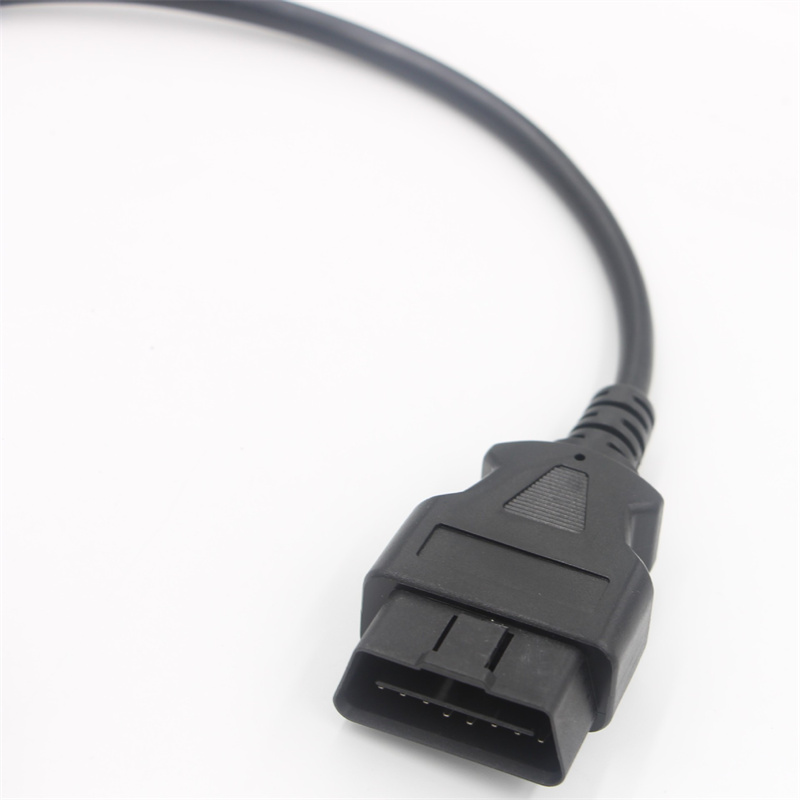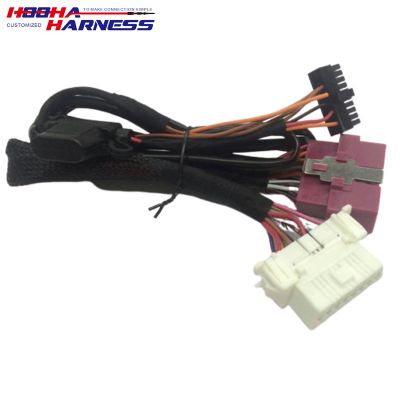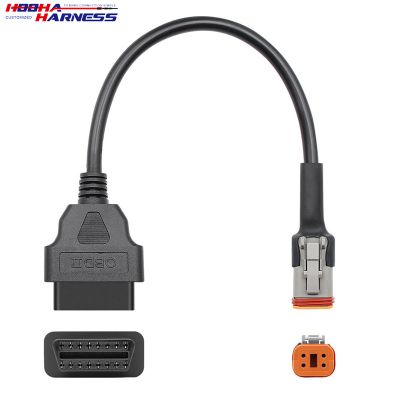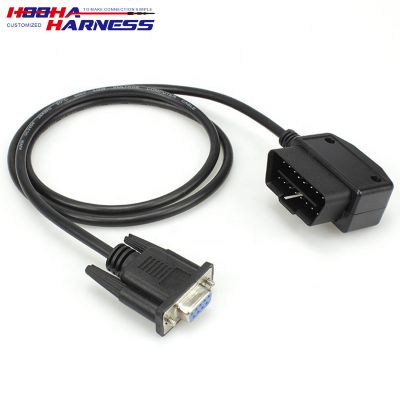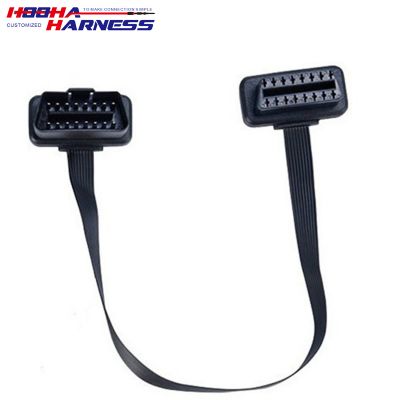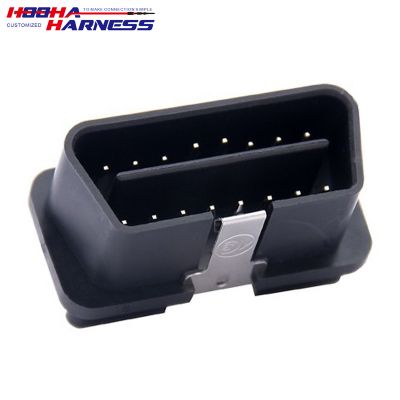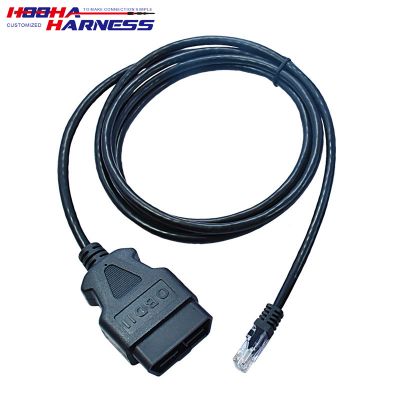PRODUCT
Custom Assembly OBD II Male to Female Cable
- Extension: Extends the reach of the OBD-II port for easier access.
- Compatibility: Works with most vehicles (1996 and newer) and various OBD-II devices like scanners.
- Splitter Functionality: Allows two devices to connect to the OBD-II port at the same time.
- Durability: Made with strong materials to withstand regular use.
- Low Profile: Designed to take up less space, making it less obtrusive.
- Flexibility: The cable is flexible, allowing it to fit around obstacles.
- Data Transfer: Ensures smooth communication between the vehicle and diagnostic tools.
- Plug and Play: Easy to use—just plug it in, and it's ready to go.
OBD II male-to-female cable
This OBD II male-to-female cable is an essential tool used in the automotive industry for diagnostic purposes. This cable serves as a bridge between the onboard diagnostics (OBD) system of a vehicle and external devices such as scanners, laptops, or other diagnostic equipment.
Designed with precision and durability in mind, this cable features a male connector on one end and a female connector on the other. The male connector is typically plugged into the OBD port of a vehicle, while the female connector provides an interface for connecting various diagnostic tools.
With its standardized design based on OBD II protocols, this cable ensures compatibility across different car makes and models. It allows technicians to access valuable information stored within the vehicle's computer system, including engine performance data, emission levels, sensor readings, and trouble codes.
By using this cable along with compatible software or hardware devices, mechanics can efficiently diagnose issues with vehicles' systems and pinpoint specific problems. This enables them to provide accurate repairs and maintenance services while saving time and reducing guesswork.
Moreover, this versatile cable also facilitates firmware updates for certain vehicle components that require reprogramming. It simplifies the process by establishing a reliable connection between external devices and the car's electronic control unit (ECU), ensuring seamless communication during programming procedures. In addition to its functionality in professional automotive workshops or garages, DIY enthusiasts can also benefit from having an OBD II male-to-female cable at their disposal. It empowers individuals to perform basic diagnostics themselves without relying solely on expensive dealership visits or mechanic services.
Send us the custom wire harness details if you need a similar wire harness assembly.



OBD Male to Female Cable Diagram (Pinout) and Functions
| OBD II Male | wire specs | OBD II Female | Functions |
| Pin 1 | 28AWG | Pin 1 | Manufacturer-specific functions. |
| Pin 2 | 28AWG | Pin 2 | Bus positive (K-Line or CAN High). |
| Pin 3 | 28AWG | Pin 3 | Bus negative (K-Line or CAN Low). |
| Pin 4 | 28AWG | Pin 4 | Chassis ground. |
| Pin 5 | 28AWG | Pin 5 | Signal ground. |
| Pin 6 | 28AWG | Pin 6 | CAN High (for CAN protocols). |
| Pin 7 | 28AWG | Pin 7 | K-Line (for older protocols). |
| Pin 8 | 28AWG | Pin 8 | Manufacturer-specific functions. |
| Pin 9 | 28AWG | Pin 9 | Manufacturer-specific functions. |
| Pin 10 | 28AWG | Pin 10 | J1850 Bus (Ford). |
| Pin 11 | 28AWG | Pin 11 | Manufacturer-specific functions. |
| Pin 12 | 28AWG | Pin 12 | Manufacturer-specific functions. |
| Pin 13 | 28AWG | Pin 13 | Manufacturer-specific functions. |
| Pin 14 | 28AWG | Pin 14 | CAN Low (for CAN protocols). |
| Pin 15 | 28AWG | Pin 15 | ISO 9141-2 (K-Line). |
| Pin 16 | 28AWG | Pin 16 | Battery positive (12V). |
Notes: Wire length, gauge, color, and wiring diagram can be customized according to your needs.
OBD Male to Female Cable Applications
1. Vehicle Diagnostics
- Used to connect diagnostic tools to the OBD-II port for reading trouble codes, monitoring engine performance, and performing system checks.
2. Data Monitoring
- Allows real-time monitoring of vehicle parameters such as speed, RPM, and fuel consumption when connected to data-logging devices.
3. Fleet Management
- Used in commercial vehicles to connect telematics systems for tracking vehicle location, performance, and maintenance needs.
4. ECU Reprogramming
- Facilitates connection to tools for reprogramming or updating the vehicle's Engine Control Unit (ECU).
5. Custom Tuning
- Enables aftermarket tuning devices to connect, allowing users to modify engine performance settings.
6. OBD-II Adapters
- Connects OBD-II Bluetooth or Wi-Fi adapters to a vehicle for wireless diagnostics and data access via smartphones or tablets.
7. Testing and Repair
- Useful for mechanics to easily connect diagnostic equipment in tight spaces, streamlining the testing and repair process.
8. Vehicle Security Systems
- Can be used to connect security devices that monitor vehicle activity and provide alerts for unauthorized access.
These applications make the OBD male-to-female cable a versatile tool for automotive diagnostics and monitoring.
How to customize your OBD II cable?
Send us your sample or drawing/schematic for quote price→ Feedback with quotation(1~3 days) → Confirm quotation → Arrange sample you for approval→ [Make mold if need(7 days) →Mold test] → Making samples(1~3 days)→Samples test(Approval) →place order for Mass production(2~3 weeks)→Quality checking→Packing →Delivery →After Service →Repeat Order.

